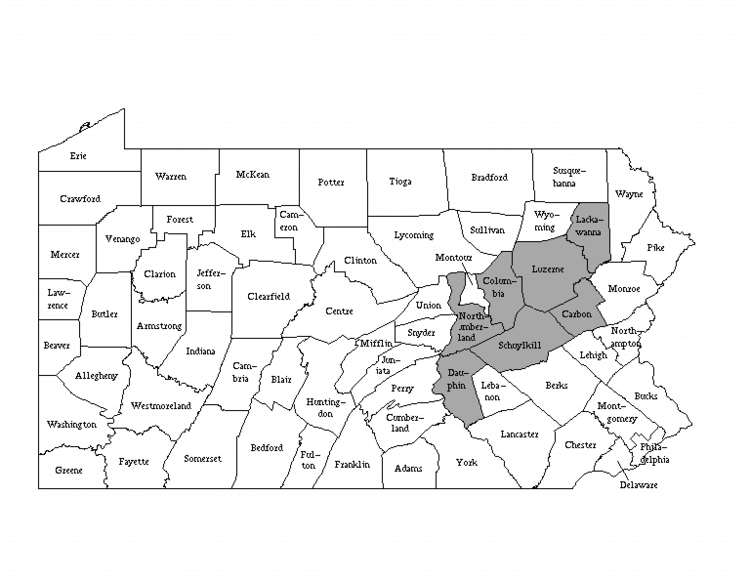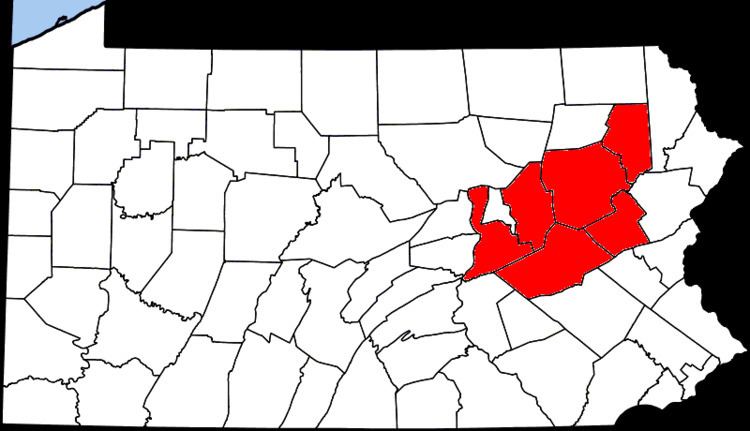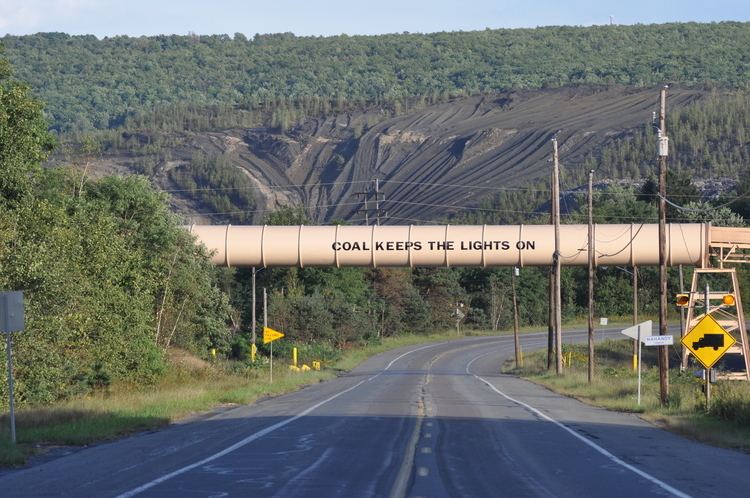 | ||
The life and hard work of children and adults in the coal region of north eastern pennsylvania
The Coal Region is a historically important coal-mining area in Northeastern Pennsylvania in the central Appalachian Mountains, comprising Lackawanna, Luzerne, Columbia, Carbon, Schuylkill, Northumberland, and the extreme northeast corner of Dauphin counties. Academics have made the distinction North Anthracite Coal Field and South Anthracite Coal Field (each of Pennsylvania), the lower region bearing the further classification Anthracite Uplands in physical geology.
Contents
- The life and hard work of children and adults in the coal region of north eastern pennsylvania
- Geography
- History
- References

The region's combined population was 890,121 people as of the 2010 census. Many of the place names in the region are from the Delaware Indians (the self-named Lenape peoples) and the powerful Susquehannock nation, an Iroquoian people who dominated the Susquehanna valley in the 16th and 17th century when Dutch, Swedish and French migrants were exploring North America and founding settlements along the Atlantic Seaboard.
The Coal region or Pennsylvania Anthracite region or fields is home to the largest known deposits of anthracite coal found in the Americas, with an estimated reserve of seven billion short tons. It is these deposits that provide the region with its nickname. The discovery of anthracite coal was first made in the Schuylkill County by a hunter in 1791, 16 years after the North Field saw its first mine.

Geography

The Region lies north of the Lehigh Valley and Berks County Regions, south of the Endless Mountains, west of the Pocono Mountains, and east of the region known in Pennsylvania as the Susquehanna Valley. The Region lies at the northern edge of the Ridge-and-Valley Appalachians, and draws its name from the vast deposits of anthracite coal that can be found under several of the valleys in the region. The Wyoming Valley is the most densely populated of these valleys, and contains the cities of Wilkes-Barre, Greater Pittston, and Scranton. Hazleton and Pottsville are two of the larger cities in the southern portion of the region. The Lehigh and Schuylkill Rivers both originate within the region, while the much larger Susquehanna River skirts the northern edge.
History
The population of the Amerindian tribesmen of the Susquehannock nation was reduced 90 percent in three years of a plague of diseases and possibly war, opening up the Susquehanna Valley and all of Pennsylvania to settlement as the tribe was all but eliminated, the survivors adopted into a quasi-enemy but related Iroquois by formal treaty in 1870.
Settlement in the region predates the American Revolution: both Delaware and Susquehannock power had been broken by disease and Indian-on-Indian warfare before the British took over the Dutch and Swedish colonies and settled Pennsylvania. The first discovery of the anthracite coal occurred in 1762, and the first mine was established in 1775 near Pittston, Pennsylvania. In 1791 Anthracite was discovered by a hunter atop Pisgah Ridge, and by 1792 the Lehigh Coal Mining Company began producing and shipping coal to Philadelphia via Mauch Chunk from the Southern Anthracite Field and Summit Hill, Pennsylvania built atop the line between Schuylkill County and what would be renamed Carbon County. By 1818, customers fed up with the inconsistent mismanagement, leased the Lehigh Coal Mining Company and founded the Lehigh Navigation Company: construction soon began for navigation; the locks and dams on the Lehigh River rapids stretches, later known as the Lehigh Canal (finished in 1820).
In 1822, the two companies merged as the Lehigh Coal & Navigation Company (LC&N) and by 1824 were turning heads with the volume of coal shipped down the Lehigh and Delaware Canals. Meanwhile, three brothers had similar ideas from near the turn of the century, and about the same time began mining coal in Carbondale, 15 miles (24.1 km) northeast of Scranton, but high enough to run a gravity railroad to the Delaware River and feed New York City via the Delaware and Hudson Canal. Pennsylvania began the Delaware Canal to connect the Lehigh Canal to Philadelphia and environs, while funding to build a canal across the Appalachians' Allegheny Mountains to Pittsburgh. In 1827, LC&N built the second railroad in the country, a gravity railroad from Mauch Chunk Switchback Railway, running Summit Hill to Mauch Chunk.
Population rapidly grew in the period following the American Civil War, with the expansion of the mining and railroad industries. English, Welsh, Irish and German immigrants formed a large portion of this increase, followed by Polish, Slovak, Ruthenian, Ukrainian, Hungarian, Italian, Russian, Jewish, and Lithuanian immigrants. The influence of these immigrant populations is still strongly felt in the region, with various towns possessing pronounced ethnic characters and cuisine.
The anthracite mining industry loomed over the region until its decline in the 1950s. Strip mines and fires, most notably in Centralia remain visible. Several violent incidences in the history of the U.S. labor movement occurred within the coal region as this was the location of the Lattimer Massacre and the home of the Molly Maguires.
The Knox Mine Disaster in 1959 served as the death knell for deep mining which faded away in the mid 1960s; almost all current anthracite mining is done via strip mining. Tours of underground mines can be taken in Ashland, Scranton, and Lansford, each of them also having museums dedicated to the mining industry. Also evident are patch towns, small villages affiliated with a particular mine. These towns were owned by the mining company. Though no longer company owned, many hamlets survive; one of them, the Eckley Miners' Village, is a museum and preserved historical town owned and administered by the Pennsylvania Historical and Museum Commission, which seeks to restore patch towns to their original state.
